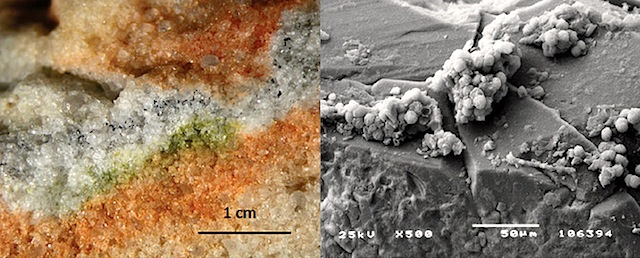 European scientists have gathered tiny fungi that take shelter in Antarctic rocks and sent them to the International Space Station. After 18 months on board in conditions similar to those on Mars, more than 60% of their cells remained intact, with stable DNA. The results provide new information for the search for life on the red planet. Lichens from the Sierra de Gredos (Spain) and the Alps (Austria) also travelled into space for the same experiment. [The report was published in Astrobiology.]
European scientists have gathered tiny fungi that take shelter in Antarctic rocks and sent them to the International Space Station. After 18 months on board in conditions similar to those on Mars, more than 60% of their cells remained intact, with stable DNA. The results provide new information for the search for life on the red planet. Lichens from the Sierra de Gredos (Spain) and the Alps (Austria) also travelled into space for the same experiment. [The report was published in Astrobiology.]
The McMurdo Dry Valleys, located in the Antarctic Victoria Land, are considered to be the most similar earthly equivalent to Mars. They make up one of the driest and most hostile environments on our planet, where strong winds scour away even snow and ice. Only so-called cryptoendolithic microorganisms, capable of surviving in cracks in rocks, and certain lichens can withstand such harsh climatological conditions.
A few years ago a team of European researchers travelled to these remote valleys to collect samples of two species of cryptoendolithic fungi: Cryomyces antarcticus and Cryomyces minteri. The aim was to send them to the International Space Station (ISS) for them to be subjected to Martian conditions and space to observe their responses. (…)
For 18 months half of the Antarctic fungi were exposed to Mars-like conditions. More specifically, this is an atmosphere with 95% CO2, 1.6% argon, 0.15% oxygen, 2.7% nitrogen and 370 parts per million of H2O; and a pressure of 1,000 pascals. Through optical filters, samples were subjected to ultra-violet radiation as if on Mars (higher than 200 nanometres) and others to lower radiation, including separate control samples. [More at links]








